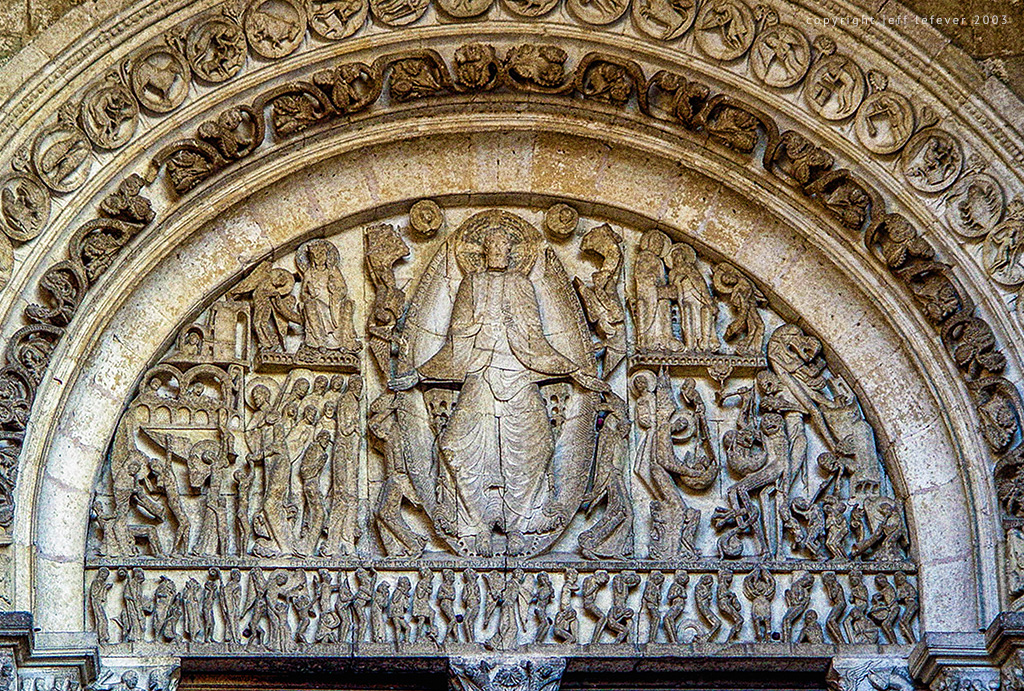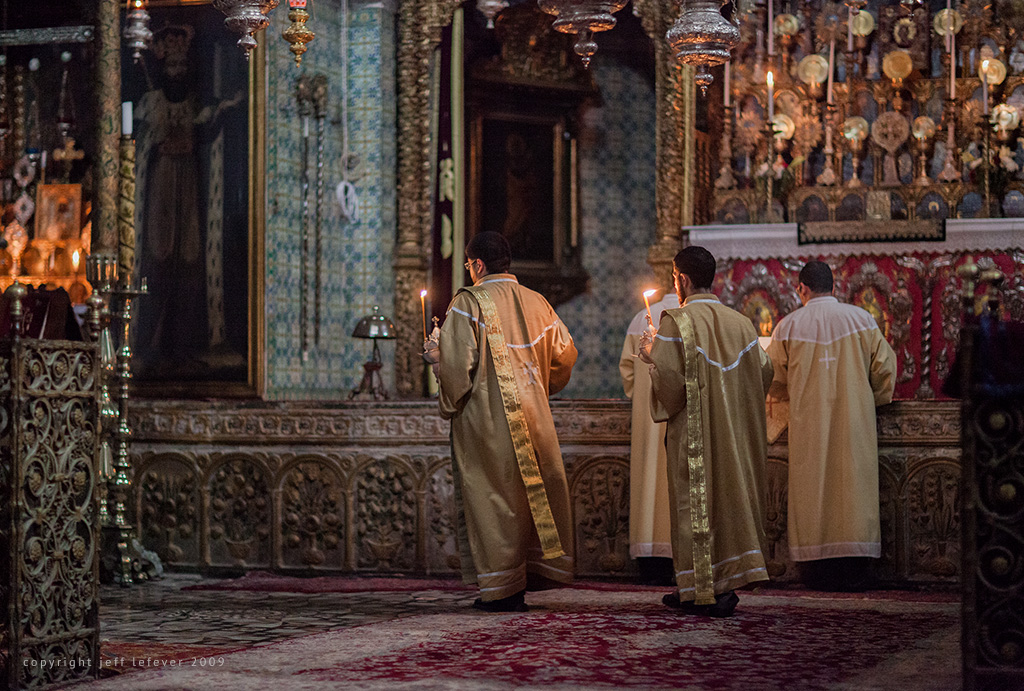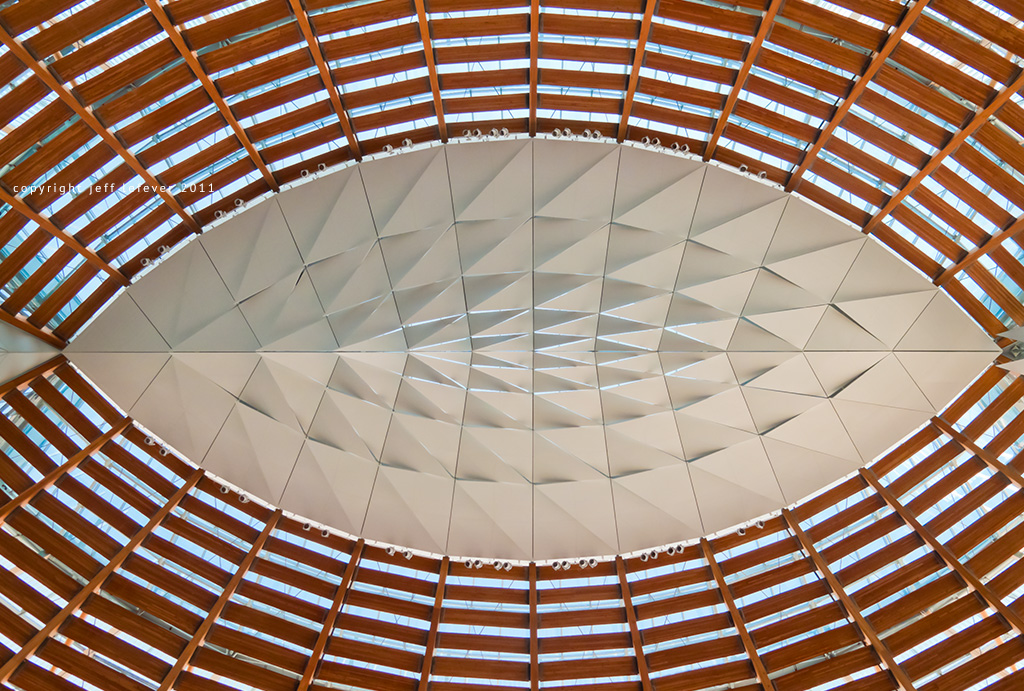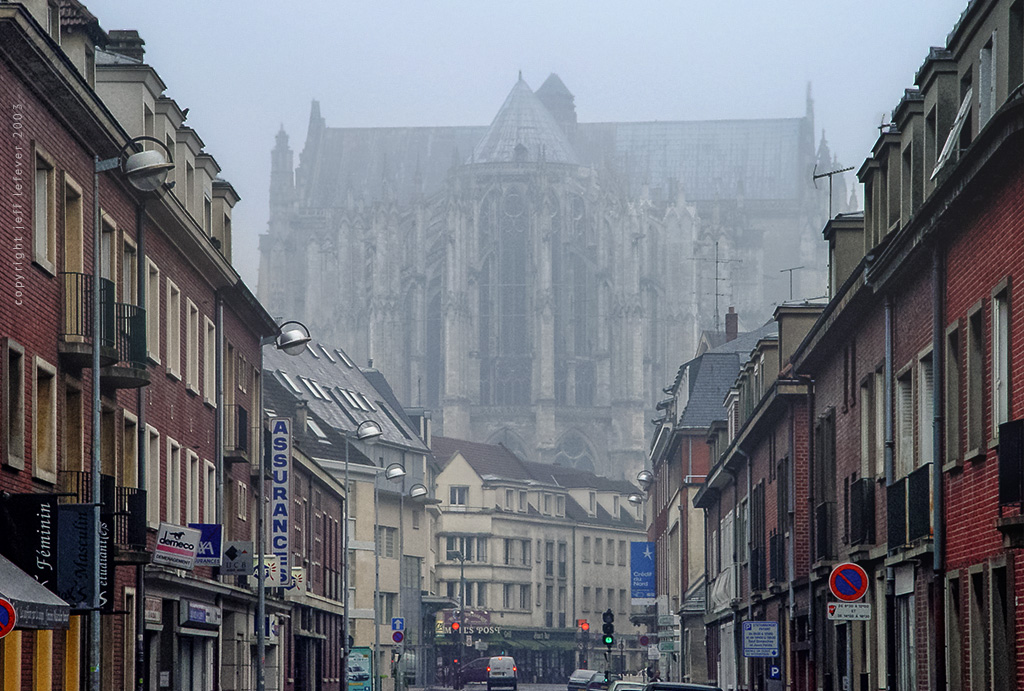Portals are something to consider, especially when we consider the Consecrated Space. How simple and powerful a door can be in changing a person’s perception of what they are entering.
My own little church, plain as it is, one evening put up black curtains in the doorway. We entered a candlelit space. The curtains added a mystery and suggested something different was now taking place. Our countenances changed. What was usually noisy, friendly chatter became anticipation and reverent silence. An ornate, Byzantine cross projected onto the front wall where a cross made of sticks normally hung.
A Byzantine crucifix in a candlelit space, discovered after passing through a black curtain. It cost nothing to do (relatively).
I had lunch with a respected friend and he said this (paraphrased in my notes): “A doorway–an entrance–is a threshold, like dawn and dusk are thresholds between day and night–places of mystery and enchantment. The door is the threshold from the world into the sanctuary. [That’ why] people cross themselves as they enter in the Russian Orthodox church–the threshold is where God meets us, where you can meet God.”
Often the most elaborate constructions within the old cathedrals and churches were the entrance portals. Not only did they establish a consciousness of a new place, but also they served as reminders to important theological ideas.
One of my favorites is Notre Dame de Amiens, where at the center of the central double door in the trumeau is a sculpture of the resurrected Christ called Le Beau Dieu (the “Beautiful [or ‘handsome’] God”). It reminds all who enter how beautiful God is in all things, from grace to judgment; love, forgiveness, and sacrifice, to relationally living imminently and eminently.
Over cathedral doors, artists would often carve bas relief tympanums of Ascensions or, in Romanesque Style churches, Last Judgment scenes, with Yeshua Judge on a heavenly throne with the dead rising from graves awakened by Gabriel’s horn. Souls being weighed, the damned cast and chomped by the jaws of hell–these tympanums a warning per Revelation–set the mood for those who enter a what often was a constructed metaphor of the “Holy Jerusalem” to come… and to avoid the judgement and enter the world to come, meant to repent of one’s wayward ways.
The portal speaks to the street, saying “in here is something different than out there” and to enter, one must be intentionally aware of their actions and of their culpability in this world. A call to look out and up beyond our own self-justification.
Considering the portal as more than a door with regard to a consecrated space: it is the point of entry for adjusting our being.
~JWL



